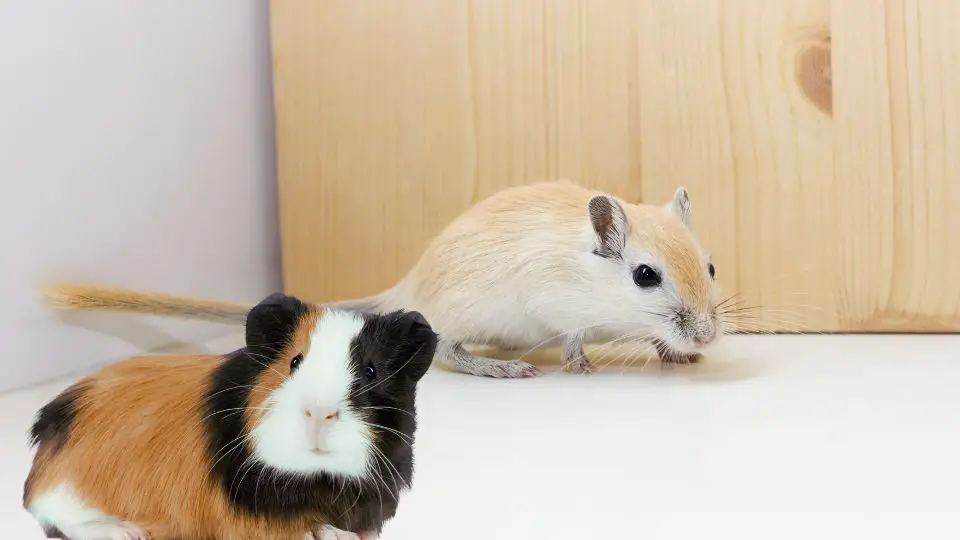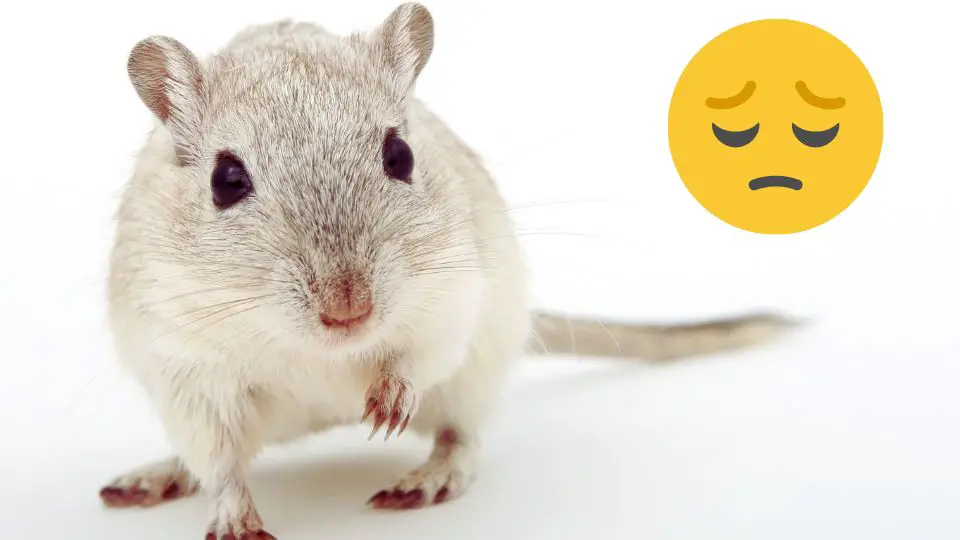As a gerbil owner, you want to ensure that your pet is happy and healthy. Providing them with a stimulating and safe environment is essential to achieving this.
This guide will provide you with all the information you need to provide your gerbil with the best possible life. From the importance of enrichment, to DIY toy ideas and gerbil-proofing your home, we cover it all.
Enriching your gerbil’s life not only keeps them mentally and physically active but also improves their overall well-being, by providing them with the right toys, activities and a safe environment, you can ensure a happy and healthy gerbil.
The Importance of Enrichment
Gerbils are active and curious creatures that require a stimulating environment to thrive. Enrichment is the process of providing animals with activities and environments that promote their physical and mental well-being. By providing enrichment, gerbil owners can ensure that their pets lead happy and healthy lives.
One of the main goals of enrichment is to keep gerbils active and happy. Gerbils are naturally active animals, and they need to be provided with opportunities to express their natural behaviors. This includes climbing, burrowing, foraging, and exploring. When gerbils have access to appropriate enrichment, they will be more active and engaged in their environment, which can lead to a happier and healthier pet.
There are many ways to provide enrichment for gerbils. Some of the most popular options include:
- Providing a spacious cage with plenty of room for climbing and exploring
- Providing a variety of toys, such as climbing structures, tunnels, and foraging toys
- Providing a variety of substrates, such as sand and shredded paper, for burrowing
- Providing a variety of foods, such as fruits, vegetables, and live insects
- Providing opportunities for socialization, such as playtime outside the cage or with other gerbils
Benefits of enrichment for gerbils
Enrichment has many benefits for gerbils’ physical and mental well-being. When gerbils have access to appropriate enrichment, they are less likely to develop behavioral problems such as boredom, inactivity, and aggression.
Enrichment also helps to keep gerbils mentally and physically stimulated, which can prevent many health problems such as obesity, muscle atrophy, and depression.
The importance of providing a variety of activities and environments cannot be overstated. Gerbils are intelligent animals and they quickly become bored with the same old routine. By providing a variety of activities and environments, gerbil owners can keep their pets mentally stimulated and engaged.
This can include providing different types of toys, such as climbing structures and foraging toys, as well as providing different types of substrates, such as sand and shredded paper, for burrowing.
It’s important to note that providing enrichment is an ongoing process and requires ongoing attention and observation to ensure that the gerbils are utilizing and benefiting from the enrichment provided.
DIY Toys for Gerbils
Gerbils require a stimulating environment to thrive. One of the best ways to provide this stimulation is through the use of toys. Gerbils love to climb, burrow, and explore, and providing them with toys that allow them to do so can help keep them happy and healthy.
While there are many commercial toys available for gerbils, many of them can be expensive and may not be tailored to the specific needs of your pet. This is where DIY toys come in. By making your own toys, you can tailor them to your gerbil’s needs and preferences, and you can save money in the process.
Remember that not all materials are safe for gerbils. Be sure to avoid materials that can be easily ingested, as these can cause stomach and intestinal issues. Some safe materials for DIY toys include:
- Cardboard: Cardboard boxes, tubes, and rolls make great climbing structures and hiding spots for gerbils.
- Paper: Paper bags, shredded paper, and newspaper can be used for burrowing and nest building.
- Wood: Unpainted and untreated wood blocks and branches make great climbing structures and gnawing toys for gerbils.
- Natural materials: Twigs, leaves, and grasses can provide a natural environment for gerbils and can also be used for nesting and burrowing.
Here is a list of DIY gerbil toys that you can make for your gerbil:
- Climbing structures: Cardboard boxes, cardboard tubes, and wood blocks can be used to create a variety of climbing structures for gerbils.
- Chewing toys: Unpainted and untreated wood blocks and branches provide great gnawing opportunities for gerbils.
- Cardboard tube: Cut a cardboard tube in half and place it in the cage for your gerbil to climb and explore.
- Paper bag: Fill a paper bag with shredded paper or hay and let your gerbil use it for nesting and burrowing.
- Wood blocks: Stack wooden blocks in the cage for your gerbil to climb and explore.
- Grass mat: Create a grass mat by braiding together blades of grass and placing them in the cage.
Tips for Making DIY Toys
DIY toys can be an excellent way to provide enrichment for gerbils. They are a cost-effective and customizable option for providing your gerbil with the mental and physical stimulation they need to thrive.
When making DIY toys for your gerbil, it’s important to remember a few key tips:
- Always use safe materials: Make sure to use materials that are safe for your gerbil to chew on, such as untreated wood and non-toxic paint.
- Keep it simple: Simple toys can be just as effective as more complex ones.
- Watch your gerbil: Observe your gerbil to see which toys they seem to enjoy the most.
- Rotate the toys: Rotate the toys every few days to keep your gerbil interested and engaged.
Gerbils and Foraging
Gerbils are naturally foraging animals, meaning they have an innate drive to search for and collect food. In the wild, gerbils spend a significant amount of time foraging for food, and this behavior is essential to their survival. However, in captivity, gerbils may not have the opportunity to forage as much as they would in the wild.
Foraging is an important aspect of a gerbil’s diet, as it provides both physical and mental stimulation. Foraging allows gerbils to engage in natural behaviors, such as digging, gnawing, and exploring, and can help prevent boredom and other behavioral issues.
Simple ways to incorporate foraging in gerbil’s diet
The following are some simple ways to incorporate foraging in your gerbil’s diet:
- Hide food: Hide small amounts of food around the cage for your gerbil to find.
- Use foraging toys: Foraging toys, such as treat balls, can be filled with food and placed in the cage for your gerbil to find and access.
- Use natural materials: Incorporate natural materials, such as twigs and leaves, into your gerbil’s diet to provide foraging opportunities.
- Offer fresh fruits and vegetables: Offer fresh fruits and vegetables as a treat, and place them in different areas of the cage for your gerbil to find.
Note that when incorporating foraging in your gerbil’s diet, you must be careful to not overfeed them, as it can lead to obesity. Gerbils are small animals and need small amounts of food, therefore it’s important to monitor the amount of food you are providing them.
By providing your gerbil with foraging opportunities, you can help them engage in natural behaviors, prevent boredom, and improve their overall well-being. Incorporating foraging techniques such as hiding food, using foraging toys and natural materials, and offering fresh fruits and vegetables are all simple ways to encourage your gerbil to search for food.
Gerbil-Proofing Your Home
Gerbils need plenty of space to explore and play. However, as with any pet, you must make sure their living environment is safe and secure. Gerbil-proofing your home is crucial to ensuring the safety of your pet while providing them with the enrichment they need.
Here are some tips for gerbil-proofing your home:
- Identifying potential hazards: It’s essential to be aware of potential hazards in your home that could harm your gerbil. Common hazards include electrical cords, small or sharp objects, toxic plants, and cleaning supplies.
- Safe and secure cage: Make sure your gerbil’s cage is safe and secure, with no sharp edges or small openings that your gerbil could escape through. Also, ensure that the cage is large enough for them to move around comfortably.
- Limit access to certain areas: Limit your gerbil’s access to certain areas of your home, such as the kitchen or bathroom, as these can be dangerous for them.
- Use gerbil-proofing materials: Use gerbil-proofing materials, such as chew-resistant tubing, to protect electrical cords and other potential hazards.
- Regularly check the cage and surrounding area: Regularly check the cage and surrounding area to ensure that it remains safe and secure for your gerbil.
Remember that even with gerbil-proofing, accidents can happen, therefore it’s important to always supervise your gerbil when they are outside of their cage.
Gerbil-proofing your home is crucial to ensuring the safety of your pet while providing them with the enrichment they need. By identifying potential hazards, using gerbil-proofing materials, limiting access to certain areas, and regularly checking the cage and surrounding area, you can create a safe and secure environment for your gerbil to enjoy.
Conclusion
Enrichment and toys are essential for the overall well-being of gerbils. By providing a variety of activities and environments, DIY toys, and foraging opportunities, owners can ensure that their gerbils live happy and healthy lives. Gerbil-proofing your home is also important for the safety of your pet.
Overall, by providing enrichment and toys for gerbils, you will be not only keeping your pet happy but also providing them with the necessary mental and physical stimulation they need to thrive in captivity.







